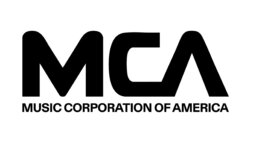Universal Music Group has launched an extensive inventory review of any material from its catalog potentially affected by the 2008 NBCUniversal lot fire.
Despite reviewing over 26,000 assets so far, UMG has identified just 22 original master recordings that are believed to have been lost in the blaze – which affect five artists in total.
In an internal note sent to UMG staff yesterday (July 17), and obtained by MBW, SVP Recording Studios & Archive Management Pat Kraus also said that “high-quality alternate sources in the form of safety copies or duplicate masters” have been located for each lost master.
The note adds that UMG does not intend to publish the names of the lost masters identified, with Kraus also writing that UMG’s “work is just beginning”.
“As we complete new work and we fill in gaps of work we’ve already done, these tallies will continue to evolve by the hour,” says Kraus.
In Kraus’s memo, he says that UMG has been “fielding requests from approximately 275 artists and representatives” over the past few weeks, presumably since the New York Times article, ‘The Day The Music Burned’ was first published.
The article and subsequent follow-up article claimed that over 500,000 masters were damaged in the fire, reportedly including original recordings by legendary artists such as Chuck Berry, Muddy Waters, Howlin’ Wolf, Aretha Franklin, Elton John and many, many others.
On June 18 Universal boss Sir Lucian Grainge issued a note to UMG staff stating: “We owe our artists answers” over the fire.
“Even though that event happened more than a decade ago, and while I’ve been somewhat relieved by early reports from our team that many of the assertions and subsequent speculation are not accurate, one thing is clear: the loss of even a single piece of archived material is heartbreaking,” said Sir Lucian Grainge at the time.
Kraus has previously suggested that the losses were “overstated” in the New York Times exposé and UMG filed a motion on Wednesday (July 17) to dismiss a class action lawsuit from the legal representatives of various artists over the alleged loss of assets in the fire.
“Of course, our work is just beginning. In the coming weeks and months we will continue to update our artists and internal teams with our progress. That said, our work can’t be reduced to numbers. As Sir Lucian stated, the loss of even one piece of archive material is heartbreaking.”
Pat Kraus, UMG
Yesterday’s memo stated that 26,663 individual assets covering 30 artists have been reviewed by UMG’s archivists.
Of those assets, 424 have been identified as potentially “missing or lost due to the fire”, of which 349 were audio assets.
Kraus goes on to explain that UMG’s “data suggests that 22 of those could be ‘original masters’ which are associated with five artists”.
“For each of those lost masters, we have located high-quality alternate sources in the form of safety copies or duplicate masters,” he adds.
“As we complete new work and we fill in gaps of work we’ve already done, these tallies will continue to evolve by the hour.”
Kraus also refers to reports naming specific artist recordings that could have been lost as “misleading”, because, he says, “there is no definitive list of what was destroyed in the fire”.
“It affected both inventoried assets and those that were not inventoried. Second, even many of the older inventoried assets did not have easy-to-identify complete and accurate metadata associated with them,” adds Kraus.
You can read Pat Kraus’s memo in full below:
Dear Colleagues:
At Sir Lucian’s request, I’d like to update you on our efforts to provide our artists transparency with respect to the archived assets we have in our facilities and those that were lost in the fire in 2008 at the NBCUniversal Studios lot.
Over the past several weeks, our team has been working around the clock, fielding requests from approximately 275 artists and representatives. To date we’ve reviewed 26,663 individual assets covering 30 artists. Of those assets, we believe we’ve identified 424 that could be missing or lost due to the fire, with audio assets accounting for 349 of them. Our data suggests that 22 of those could be “original masters” which are associated with 5 artists. For each of those lost masters, we have located high-quality alternate sources in the form of safety copies or duplicate masters. As we complete new work and we fill in gaps of work we’ve already done, these tallies will continue to evolve by the hour.
Of course, our work is just beginning. In the coming weeks and months we will continue to update our artists and internal teams with our progress. That said, our work can’t be reduced to numbers. As Sir Lucian stated, the loss of even one piece of archive material is heartbreaking. And while our initial efforts have yielded encouraging results, it’s fair to assume that while some recordings will prove not to have been impacted, others naturally will. For those of us who have devoted our lives to the preservation of music, there are many painful moments when we contemplate what has been lost. However, this experience has inspired us to redouble our efforts: first, to find alternate copies and other solutions for any lost recordings and second, to safeguard our archives to ensure that the music in these recordings will live on forever and be enjoyed by fans at the highest fidelity possible.
Finally, we have been asked numerous questions by artists and their representatives. Following are the most frequent ones. Should you receive any others, please to send them on to me. We will answer them as quickly as we can.
1. Why don’t you just publish a list of what was lost in the fire?
While it would be ideal if we could publish such a list, unfortunately, it’s not that simple. First, there is no definitive list of what was destroyed in the fire because it affected both inventoried assets and those that were not inventoried. Second, even many of the older inventoried assets did not have easy-to-identify complete and accurate metadata associated with them. As a result, the list of supposedly affected assets published in press reports is misleading.
2. Why does it take so long to determine what assets you have for a particular artist?
We are committed to responding as quickly as possible with complete transparency to any artist who inquires about their master recordings in our archives. However, it can take days to conduct research on a single artist in order to present an accurate picture of the assets we have. Here’s why:
The “assets” in our archives comprise far more than original audio master recordings. The bulk of the material in the archives consist of secondary copies of material. Assets in the archives include protection copies, multi-tracks, demos, safeties, and videos as well as non-recorded items such as artwork, session notes and much more. In fact, the majority of our archived assets are not masters. Thanks to advances in technology and the expertise of our archiving team, we can now quickly locate and identify the assets stored in our facilities which came into our possession over the last several years.
When it comes to assets that are older, however, our team’s work is more complicated and time-consuming. For example, thousands of associated assets held at our facilities around the world might relate to one particular artist. The first step in inventorying those assets is to go through each of the assets individually and identify which of them are master recordings. For these older assets, we often must rely on the accuracy of the information that was originally written on a box in a studio or by a third party and which was then subsequently transferred to a database. Where the information was not catalogued reliably at the time the recordings were originally created, more investigative work by our team is required.
Once we have conveyed the information to the artist or the artist’s representative, there often is further dialogue between our team and the artist’s which has sometimes resulted in locating additional assets which were not in a UMG facility but which may be in the possession of the artist, or a producer, another record company or a recording studio.
3. If an artist was mentioned in recent media reports regarding the 2008 fire, does that mean their masters were destroyed? What is the “god list” that has been referred to in some articles?
There is no definitive list of what was destroyed in the fire. Thus, just because an artist was listed in an article about the 2008 fire does not necessarily mean that that artist’s masters were destroyed. In the aftermath of the fire, many internal working lists and drafts of lists were generated and used for various purposes. A number of these lists included assets known to have been in the NBCUniversal facility, as well as assets—such as the entire catalogs of certain labels—which might or might not have been stored there.
Most of the artists on these internal lists were based on estimates and guesswork and—most importantly—these lists do not indicate whether those artists’ archived assets were masters, duplicates or other recorded, or even non-recorded media. Because of the misleading manner with which the list was reported, artists and estates have been concerned about the status of recordings of their performances. It is important to note that even after The New York Times Magazine stated that the list they published “represents many — but not all — of the acts believed by UMG officials to have lost master recordings in the fire” they went on to say that “it is not possible to assert definitively which masters were burned in the fire, nor can it be said categorically that all of these artists did in fact lose masters.”
4. Are you planning to make public the status of particular artist masters?
At this stage, no. Our current priority is to communicate directly with our artists and their representatives. Each artist can determine if they wish to publicly release the information we convey to them.
5. If a master is lost or destroyed, is it still possible to reissue high-quality recordings of that music?
Absolutely. Some recent media reports have created a significant amount of confusion about the role masters play in reissue work. In many cases, even when the original master is available, we often work from duplicates or digitized versions because the fidelity of the original master has deteriorated from overuse or from chemical interactions over time or for other technical reasons. We reissue thousands of recordings a year, and each project presents a unique set of challenges to overcome. In each case, our team of experts works hard to locate, restore, preserve and make available the highest fidelity recordings possible. For those masters that were lost in the fire, we explore various alternatives that may exist to make up for the loss.
6. I read reports of artists claiming that their masters have been destroyed. Does that mean they were told the results of your work?
Not necessarily. Many of the artists who have spoken out did so based on their concerns after reading their names in The New York Times Magazine. We have subsequently communicated with many of these artists following their public comments and in many cases we’ve been able to reassure them about the status of masters of their performances. This is not to say there weren’t losses in the fire, it’s simply to say that the Times report is not a reliable source for what was lost and as a result it has created significant confusion.
7. Where are masters stored today? How can we be sure they are safe?
Our assets are safely housed in temperature-controlled, secure facilities strategically located near our key operations centers. Our global team of archivists regularly and continuously care for our masters and other recorded media, to ensure the music will be available to fans today and for generations to come.Music Business Worldwide




